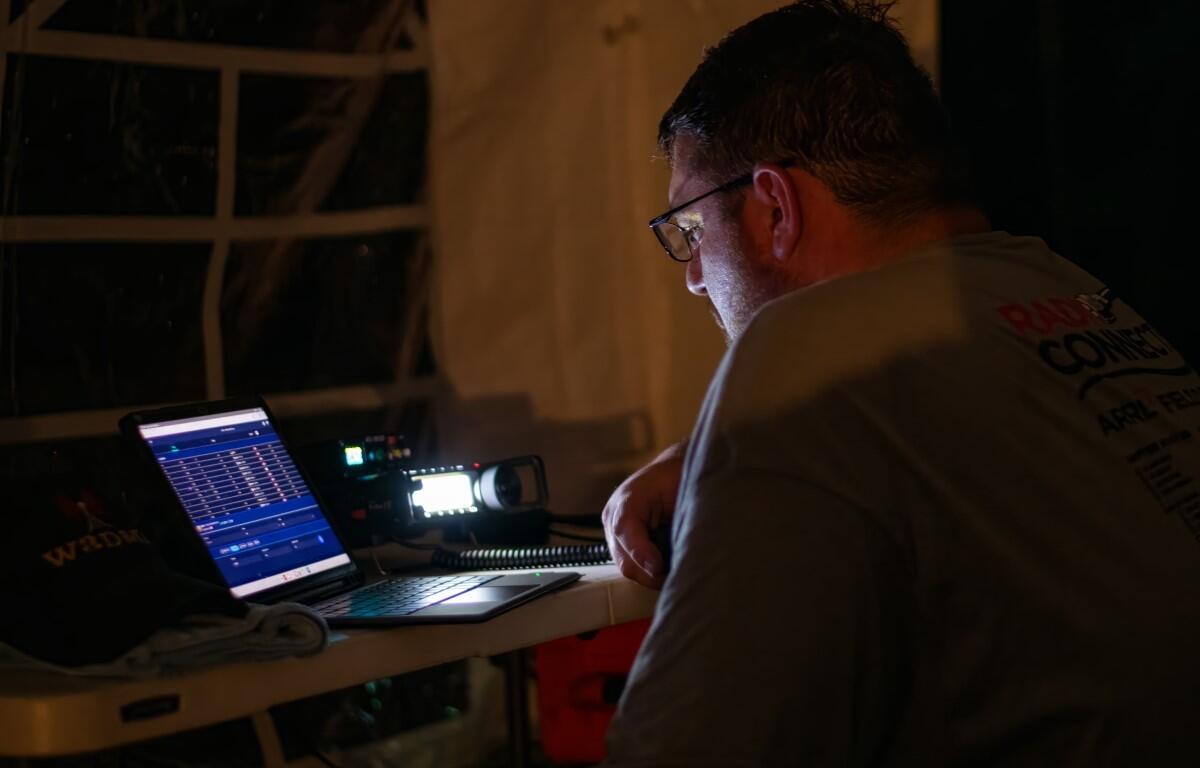CLARKSVILLE, TN − The dew had barely evaporated from the grass at Civitan Park when members of the Clarksville Amateur Transmitting Society (CATS) began setting up for the annual ARRL Field Day on Saturday, June 28.
Every year on the last full weekend of June, the American Radio Relay League (ARRL), the national association for amateur radio operators, hosts Field Day, a public-facing, friendly competition among clubs across the country. The challenge? Simulate an emergency where the power grid is down, cell towers are unreliable, and communication depends solely on technical skill, ingenuity, and radio waves.
This year, CATS operated under the “6A” classification meaning six stations were simultaneously on the air, powered entirely by generators, solar panels, and batteries. The “A” indicates that operations were conducted outdoors and off the grid, just like they would be in a real disaster scenario.
Operators rotated in and out of the stations over 24 hours, working together to maintain contact across multiple bands and modes. Using a mix of SSB (voice), CW (Morse code), and FT8 (digital), the team made 319 confirmed contacts with stations across the U.S., Canada, and even as far as Hawaii a highlight contact made by local operator Stacey McNeely.
The event also drew visitors from the community, including Rodney Grimsley from Montgomery County Emergency Management Agency (EMA). His visit reinforced the strong partnership between local amateur radio volunteers and official emergency response efforts. It also highlighted Field Day’s core mission testing our readiness to serve the public when it matters most.
Neither high temperatures nor a torrential downpour stopped the club from completing the event. Even in the early morning hours, the site buzzed with activity.
Of course, Field Day is also about fellowship and fun. Meals were shared under the Marvin Smith Pavilion, stories traded between shifts, and a commemorative cake was cut to celebrate another successful year. As much laughter was heard as there were callsigns, reminding everyone that amateur radio builds community both on and off the air.
“So, the whole focus … is to also outreach to the public and show them what disaster communications can be like,” said Robert Brady, club president.
While Field Day is an important training and outreach event, the mission runs deeper. Many CATS members also serve with Montgomery County TN Amateur Radio Emergency Services (ARESMCTN), a volunteer team that provides off-grid communications during real-world emergencies.
Ever vigilant, they are often making coordinations ahead of the storm, sometimes even before the public receives official severe weather warnings. Their ability to operate off-grid and adapt in real time makes them an indispensable part of the region’s disaster preparedness and response network.
While final results are still being tabulated, CATS currently ranks in the top 10 nationally on the World Radio League leaderboard. Though standings may shift as more logs are submitted, the strong showing reflects the team’s dedication, coordination, and technical skill throughout the 24-hour event.


